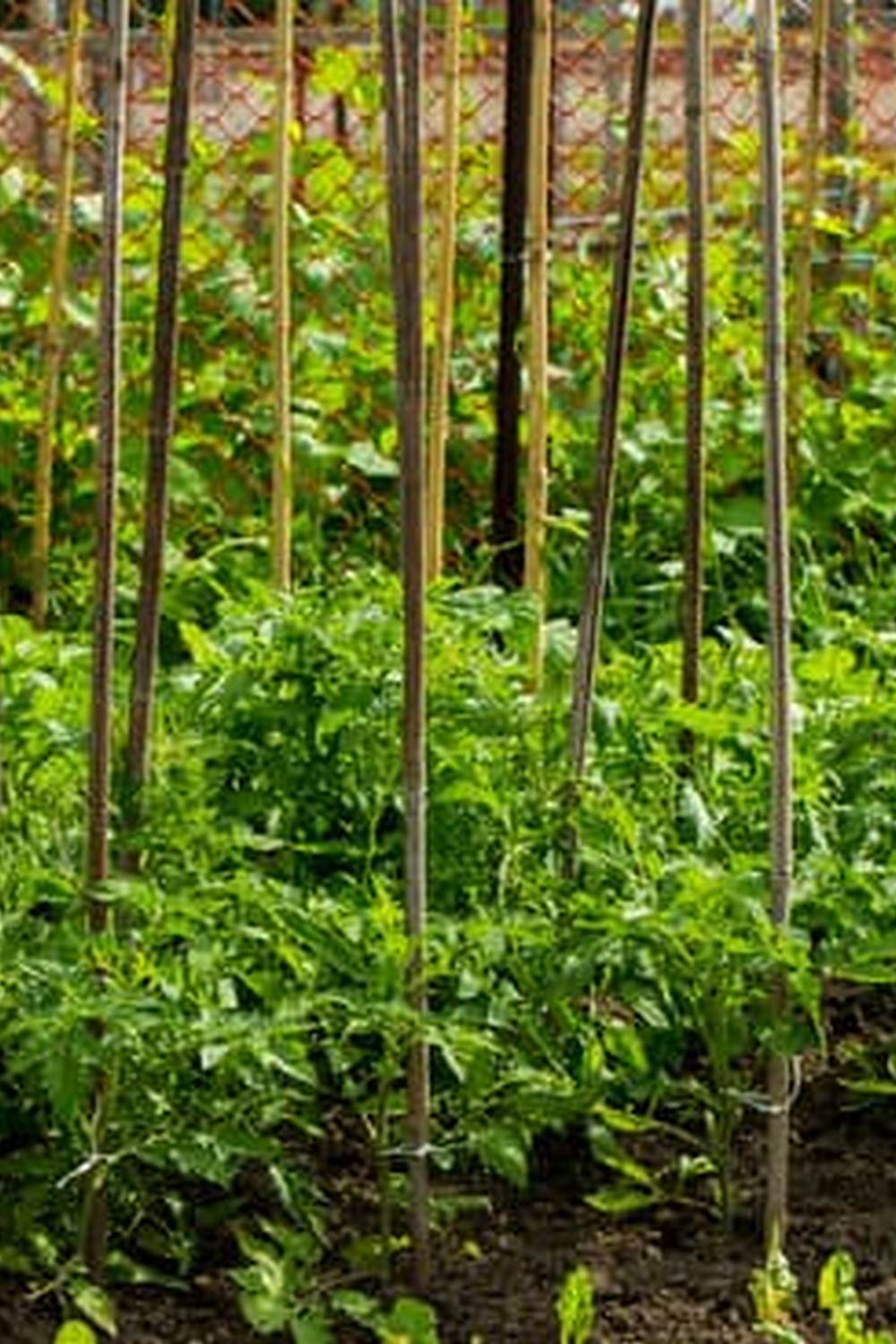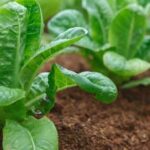Nightshade vegetables gardening involves cultivating a group of vegetables belonging to the Solanaceae family, including tomatoes, peppers, eggplants, and potatoes. While these vegetables are popular in many cuisines for their unique flavors and versatility, they also offer a range of health benefits. From choosing the right location and soil preparation to planting and caring for nightshade vegetables, this article will provide valuable insights and tips for successful gardening.
Nightshade vegetables are rich in vitamins, minerals, and antioxidants that promote overall health. Growing these vegetables in your garden not only ensures a fresh supply of produce but also allows you to enjoy the satisfaction of homegrown, organic food. In addition to the health benefits, cultivating nightshade vegetables at home can also be a rewarding and therapeutic experience for gardeners of all levels.
To embark on a successful nightshade vegetable gardening journey, it is crucial to understand the specific requirements of these plants. This article will delve into selecting the right location for planting them, preparing the soil with essential nutrients, determining the best varieties to grow, as well as effectively managing pests and diseases that may affect their growth.
Whether you are a novice gardener or an experienced enthusiast looking to expand your crop selection, this guide will equip you with valuable information to ensure a thriving nightshade vegetable garden.
Benefits of Growing Nightshade Vegetables in Your Garden
Nightshade vegetables, such as tomatoes, peppers, and eggplants, are not only delicious additions to any meal but also offer a variety of benefits when grown in your garden. One major benefit is the nutritional value that nightshade vegetables provide. They are rich in vitamins, minerals, and antioxidants, which contribute to a healthy diet and lifestyle. Additionally, growing these vegetables at home allows you to have access to fresh produce without the use of harmful pesticides or chemicals.
Another advantage of including nightshade vegetables in your garden is their versatility in cooking. From sauces and salads to grilling and stir-frying, these vegetables can be used in a wide range of recipes. Having them readily available in your garden encourages culinary creativity and experimentation with different flavor profiles.
Furthermore, cultivating nightshade vegetables in your garden can be a cost-effective way to reduce grocery expenses. By growing your own produce, you can save money on buying these items from the store while also enjoying the satisfaction of harvesting and consuming homegrown food.
When it comes to gardening with nightshade vegetables, it’s important to consider the best practices for planting and caring for these plants. Selecting the right location, preparing the soil properly, and managing pests and diseases are essential aspects to ensure a successful harvest.
| Nightshade Vegetable | Benefit |
|---|---|
| Tomatoes | Rich in vitamins A and C |
| Peppers | Versatile for cooking purposes |
| Eggplants | Cost-effective compared to store-bought options |
Choosing the Right Location for Planting Nightshade Vegetables
When it comes to planting nightshade vegetables in your garden, choosing the right location is crucial for their growth and development. Nightshade vegetables require plenty of sunlight, optimal soil conditions, and protection from harsh weather conditions.
Sunlight Requirements
Nightshade vegetables, such as tomatoes, peppers, and eggplants, thrive in full sunlight. It’s essential to choose a location in your garden that receives at least 6 to 8 hours of direct sunlight daily. Without adequate sunlight, the plants may not produce healthy fruits or may even suffer from stunted growth.
Soil Drainage and Composition
Before planting nightshade vegetables, it’s important to assess the soil drainage and composition of the chosen location. These vegetables prefer well-draining soil with good fertility. Additionally, they thrive in slightly acidic soil with a pH level between 6.0 and 7.0. If the soil in your chosen location does not meet these requirements, consider amending it with organic matter such as compost or well-rotted manure.
Protection From Weather Conditions
While nightshade vegetables require ample sunlight, they also need protection from extreme weather conditions such as strong winds or heavy rain. Choose a location that is sheltered from these elements, either naturally or through the use of garden structures like trellises or windbreaks.
By carefully selecting the right location for planting nightshade vegetables in your garden, you can ensure that they receive the necessary sunlight and growing conditions for a successful harvest.
Soil Preparation and Nutrient Requirements for Nightshade Vegetables
When it comes to growing nightshade vegetables in your garden, soil preparation is essential for a successful harvest. Nightshade vegetables, such as tomatoes, peppers, and eggplants, thrive in well-drained, fertile soil with plenty of organic matter. Before planting, it’s important to prepare the soil by removing any weeds and debris and loosening the soil to improve aeration.
Adding organic matter, such as compost or well-rotted manure, can help improve the texture and fertility of the soil. This will provide the necessary nutrients for your nightshade vegetables to grow healthy and produce abundant yields. Incorporating a balanced fertilizer into the soil before planting can also provide the additional nutrients that these plants require for optimal growth.
Nutrient Requirements for Nightshade Vegetables
Nightshade vegetables have specific nutrient requirements that are essential for their growth and development. These plants need a good supply of nitrogen to support leafy growth, phosphorus for root development and fruit production, and potassium for overall plant health and disease resistance.
To ensure that your nightshade vegetables receive the necessary nutrients, conducting a soil test can be beneficial in determining any deficiencies or imbalances in the soil. Based on the results of the soil test, you can then make adjustments by adding specific fertilizers or organic amendments to meet the nutritional needs of your nightshade vegetables throughout their growing season.
Maintaining proper soil pH is also important for nightshade vegetables as they prefer slightly acidic soil with a pH range between 6.0 to 6.8. If needed, you can adjust the pH level of your garden soil by adding lime to raise it or sulfur to lower it accordingly. By providing adequate nutrition and maintaining proper soil conditions, you can ensure healthy growth and bountiful harvests from your nightshade vegetable garden.
Organic Matter Addition
When preparing the soil for planting nightshade vegetables, incorporating organic matter is crucial to enhance its fertility and structure. Compost provides an excellent source of organic matter rich in essential nutrients that will benefit the overall health of your nightshade plants. By mixing compost into the top layer of soil before planting, you can improve its water retention capabilities while also promoting beneficial microbial activity that supports plant growth.
Fertilizer Application
Applying a balanced fertilizer with an N-P-K ratio suitable for nightshade vegetables supplies them with essential nutrients required at different stages of their growth cycle. It’s recommended to add fertilizer at planting time followed by subsequent applications during key developmental stages such as flowering and fruiting to support consistent plant growth and high-quality yields.
Soild Testing
Conducting a soil test before planting nightshade vegetables allows you to accurately assess its nutrient composition which then influences any necessary adjustments through targeted fertilization strategies tailored specifically towards meeting those nutritional needs throughout their growing season.
Best Varieties of Nightshade Vegetables for Gardening
When it comes to choosing the best varieties of nightshade vegetables for gardening, there are several options that can thrive in a variety of climates and growing conditions. One popular choice for many gardeners is the classic tomato, which comes in a wide range of sizes, colors, and flavors. Some popular varieties include the sweet and juicy ‘Sun Gold’ cherry tomato, the meaty and flavorful ‘Roma’ plum tomato, and the heirloom ‘Brandywine’ with its rich, complex taste.
Another favorite nightshade vegetable for gardening is the versatile bell pepper. Varieties like ‘California Wonder’ produce large, sweet peppers that are perfect for stuffing or slicing into salads. For those who prefer a little heat, ‘Jalapeno’ and ‘Anaheim’ peppers are excellent choices that can be used fresh or dried for spice.
Eggplant is another great nightshade vegetable to grow in your garden, with varieties like ‘Black Beauty’, which produces glossy, deep purple fruits perfect for grilling or roasting. There are also more unique eggplant varieties such as the small, round ‘Fairy Tale’, or the slender Japanese ‘Ichiban’.
In addition to these popular choices, other nightshade vegetables like potatoes and tomatillos also have a variety of delicious options to explore when planning your garden. By choosing the right varieties of nightshade vegetables for your gardening needs, you can ensure a successful harvest and enjoy a bountiful supply of fresh produce throughout the growing season.
Planting and Caring for Nightshade Vegetables
Nightshade vegetables, including tomatoes, peppers, and eggplants, are excellent additions to any home garden. Once you have chosen the right location and prepared the soil, it’s time to start planting and caring for your nightshade vegetables. Here are some tips to help you successfully grow these popular garden favorites:
- When to plant: Nightshade vegetables are warm-season crops, so it is best to plant them after the last frost date in your area. This is typically in the spring or early summer.
- Spacing: Make sure to space your nightshade plants properly to allow for good air circulation and prevent overcrowding. Tomatoes should be planted about 18-24 inches apart, while peppers and eggplants need about 12-18 inches of space between each plant.
- Watering: Nightshade vegetables require consistent and even watering throughout the growing season. It’s important to keep the soil evenly moist but not waterlogged. Aim to water at the base of the plants to prevent wetting the foliage, which can lead to diseases.
- Fertilizing: Use a balanced fertilizer that is specifically formulated for vegetables. It’s best to fertilize your nightshade plants when you first plant them, and then again when they start setting fruit. Be careful not to over-fertilize, as this can lead to excessive foliage growth at the expense of fruit production.
Caring for nightshade vegetables also involves providing support for taller plants such as tomatoes and protecting them from pests and diseases. By following these tips, you can ensure a bountiful harvest of delicious tomatoes, peppers, and eggplants from your garden.
Pest and Disease Management for Nightshade Vegetables
Nightshade vegetables, such as tomatoes, peppers, and eggplants, are popular choices for home gardeners due to their delicious flavor and versatility in cooking. However, like any other type of vegetable, nightshades are susceptible to pests and diseases that can affect their growth and yield. In this section, we will discuss some effective strategies for managing pests and diseases in your nightshade vegetable garden.
One common pest that affects nightshade vegetables is the tomato hornworm, a large green caterpillar that feeds on the leaves and fruits of tomato plants. To control these pests, you can handpick them off the plants or use biological controls such as introducing natural predators like parasitic wasps. Additionally, using row covers can help protect your plants from infestations.
Another important aspect of pest management in nightshade vegetable gardening is disease prevention. Common diseases that affect these vegetables include early blight, late blight, and blossom end rot. To prevent these diseases, it is essential to practice good cultural practices such as providing adequate spacing between plants for good air circulation and using drip irrigation to keep foliage dry.
It’s important to monitor your plants regularly for any signs of pest or disease infestations so that you can take prompt action to prevent them from spreading. By implementing these pest and disease management strategies, you can ensure a healthy and productive harvest of nightshade vegetables from your garden.
| Pest/Disease | Management Strategy |
|---|---|
| Tomato Hornworm | Handpicking; Introducing natural predators; Using row covers |
| Early Blight/Late Blight/Blossom End Rot | Good cultural practices (spacing for good air circulation); Drip irrigation to keep foliage dry; Regular monitoring for signs of infestation |
Harvesting and Cooking With Nightshade Vegetables
Once your nightshade vegetables have grown and matured, it is time to harvest them for consumption. Most nightshade vegetables are best harvested when they have reached full maturity. This can be determined by the color, size, and firmness of the fruit. For example, tomatoes should be fully colored with a slight give when squeezed, while peppers should have reached their full size and color.
When harvesting your nightshade vegetables, it is important to handle them carefully to avoid bruising or damaging the fruit. Using sharp scissors or pruners to cut the fruit from the plant is recommended to prevent any damage. Once harvested, it is best to consume your nightshade vegetables as soon as possible for the best flavor and nutritional value.
Nightshade vegetables are incredibly versatile in the kitchen and can be used in a variety of dishes. Tomatoes can be used fresh in salads, roasted for sauces, or sun-dried for long-term preservation. Peppers are great for adding a kick to salsas, stir-fries, or stuffed with delicious fillings. Eggplants can be grilled, roasted, or sautéed for a delectable addition to pasta dishes or vegetarian meals.
Incorporating nightshade vegetables into your cooking not only adds delicious flavors and textures to your dishes but also provides you with essential nutrients such as vitamins A and C, potassium, and dietary fiber. Experimenting with different recipes and cooking methods will allow you to fully appreciate the diversity of flavors that nightshade vegetables have to offer.
Conclusion
In conclusion, growing nightshade vegetables in your garden can be a rewarding and beneficial experience. Despite their reputation for being challenging to grow, with the right knowledge and care, these plants can thrive and provide a bountiful harvest. By choosing the right location, preparing the soil properly, selecting the best varieties, and implementing effective pest and disease management, you can set yourself up for success in nightshade vegetable gardening.
One important tip for successful nightshade vegetable gardening is to stay vigilant against common pests and diseases that can affect these plants. Regularly inspecting your garden and taking proactive measures to prevent issues such as aphids, potato beetles, or blight can help ensure a healthy crop. Additionally, proper watering and fertilization techniques tailored to the specific needs of nightshade vegetables will contribute to their overall health and productivity.
Lastly, don’t forget to enjoy the fruits of your labor. Harvesting your homegrown nightshade vegetables and experimenting with different recipes in the kitchen can be a delightful way to savor the rewards of your hard work.
Whether it’s incorporating fresh tomatoes into a summer salad or roasting eggplant for a hearty side dish, cooking with homegrown produce adds an extra layer of satisfaction to the gardening experience. With dedication and attention to detail, you can successfully cultivate a thriving garden full of delicious nightshade vegetables.
Frequently Asked Questions
What Are Nightshade Vegetables to Avoid?
Nightshade vegetables to avoid include tomatoes, potatoes, eggplants, and peppers. Some people have sensitivities or allergies to these vegetables, so it’s important to be aware of them in your diet.
What Grows Well With Nightshade Vegetables?
Nightshade vegetables actually grow well with other nightshade plants. For example, planting tomatoes and peppers together can create a mutually beneficial environment for both plants to thrive in the garden.
Should I Remove Nightshade From My Garden?
Whether or not you should remove nightshade from your garden depends on your personal health and dietary needs. If you or someone in your household has sensitivities or allergies to nightshade vegetables, it may be best to avoid growing them in your garden.

If you’re looking to get into vegetable gardening, or are just looking for some tips on how to make your current garden better, then you’ve come to the right place! My name is Ethel and I have been gardening for years. In this blog, I’m going to share with you some of my best tips on how to create a successful vegetable garden.





